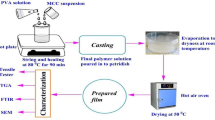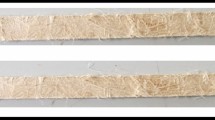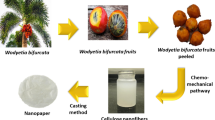Abstract
Cellulose microfibrils (CMF) are a promising biobased material with unique nanospecific properties, giving them potential for use in numerous applications. Based on this, cost-effective and novel high-consistency enzymatic fibrillation (HefCel) technology was used to produce CMF, which was further used to reinforce middle ply of board structure and the results compared with those obtained without CMF addition and with addition of CMF produced by traditional Masuko grinding (VTT Native grade). The results showed an average increase in tensile index of middle ply of board of approximately 50% with VTT Native grade and approximately 15% with HefCel grade at 3% CMF dosage. According to special board measurements, ~100% improvement in Scott bond, ~117% improvement in Z-directional strength, as well as ~13% improvement in bending stiffness were achieved with VTT Native grade compared with the reference case, while addition of HefCel resulted in improvements of ~35% in Scott bond, ~40% in Z-directional strength, and ~20% in bending stiffness. Addition of HefCel CMF generated a bulkier handsheet structure compared with VTT Native CMF, which had a direct impact on the bending stiffness. The differences in the strengthening effect between HefCel CMF and VTT Native CMF are most probably due to the fibril morphology; VTT Native CMF with long and flexible fibrils provided tensile strength, while HefCel CMF consisting of short fibrils had a more substantial impact on the bending stiffness. The bending stiffness is one of the most important characteristics in board applications, indicating that HefCel CMF has potential for use as a reinforcement material in packaging applications.
















Similar content being viewed by others
References
Ahola S, Österberg M, Laine J (2008) Cellulose nanofibrils—adsorption with poly(amidamine) epichlorohydrin studied by QCM-D and application as paper strength additive. Cellulose 15:303–314
Alen R (2007) Papermaking science and technology, paper making chemistry, Fapet Oy, Helsinki, Chapter 2 and 3
Brodin FW, Gregersen ØW, Syverud K (2014) Cellulose nanofibrils: challenges and possibilities as a paper additive or coating material—a review. Nord Pulp Pap Res J 29(1):156–166
Chun Tao D (2000) Optimization of bending stiffness of folding boxboard. Asian Institute of Technology, Pulp and Paper Technology, School of Environment, Resources and Development
Dimic-Misic K (2014) Micro and nanofibrillated cellulose (MNFC) as additive in complex suspensions: influence on rheology and dewatering. Department of Forest Products Technology. Aalto University publication series doctoral dissertations, 73/2014
Dimic-Misic K, Puisto A, Paltakari J, Alava M, Maloney T (2013) The influence of shear on the dewatering of high consistency nanofibrillated cellulose furnishes. Cellulose 20:1853–1864
Djafari Petroudy SR, Syverud K, Chinga-Carrasco G, Ghasemain A, Resalati H (2014) Effects of bagasse microfibrillated cellulose and cationic polyacrylamide on key properties of bagasse paper. Carbohydr Polym 99:311–318
Eriksen Ø, Syverud K, Gregersen Ø (2008) The use of microfibrillated cellulose produced from kraft pulp as strength enhancer in TMP paper. Nord Pulp Pap Res J 23:299–304
Eurostat, Industrial electricity price in Finland in 2015. http://ec.europa.eu/eurostat/statistics-explained/index.php/Electricity_price_statistics. Accessed 10 June 2016
Future Markets (2015) Nanocellulose. The Global Market, 7th edn. Future Markets Inc., Dublin
González I, Boufi S, Pèlach MA, Alcalà M, Vilaseca F, Mutje P (2012) Nanofibrillated cellulose as paper additive in Eucalyptus pulps. Bioresources 7(4):5167–5180
González I, Vilaseca F, Alcalá M, Pèlach MA, Boufi S, Mutjé P (2013) Effect of combination of biobeating and NFC on the physico-mechanical properties of paper. Cellulose 20:1425–1435
González I, Alcalà M, Chinga-Carrasco G, Vilaseca F, Boufi S, Mutjé P (2014) From paper to nanopaper: evolution of mechanical and physical properties. Cellulose 21:2599–2609
Henriksson M, Berglund LA, Isaksson P, Lindström T, Nishino T (2008) Cellulose nanopaper structures of high toughness. Biomacromolecules 9:1579–1585
Herrick FW, Casebier RL, Hamilton JK, Sandberg KR (1983) Microfibrillated cellulose: morphology and accessibility. J Appl Polym Sci: Appl Polym Symp 37:797–813
Hietala M, Ämmälä A, Silvennoinen J, Liimatainen H (2016) Fluting medium strengthened by periodate-chlorite oxidized nanofibrillated celluloses. Cellulose 23:427–437
Hii C, Gregersen ØW, Chinga-Carrasco G, Eriksen Ø (2012) The effect of MFC on the pressability and paper properties of TMP and GCC based sheets. Nord Pulp Paper Res J 27(2):388–396
Hiltunen J, Kemppainen K, Pere J (2015) Process for producing fibrillated cellulose material. WO2015092146 A1
Hytönen E, Leppävuori J, Future Biorefinery (FuBio) research into process concepts—early stage process evaluation and screening (2014) 5th Nordic Wood Biorefinery Conference. 25–27 March, Stockholm
Iwamoto S, Kai W, Isogai A, Iwata T (2009) Elastic modulus of single cellulose microfibrils from tunicate measured by atomic force microscopy. Biomacromolecules 10:2571–2576
Kajanto I, Kosonen M (2012) The potential use of micro- and nanofibrillated cellulose as a reinforcing element in paper and board based packaging. 2012 Tappi International Conference on Renewable Materials. 5–7 June, Montreal
Kangas H, Lahtinen P, Sneck A, Saariaho A-M, Laitinen O, Hellen E (2014a) Characterization of fibrillated celluloses. A short review and evaluation of characteristics with a combination of methods. Nord Pulp Pap Res J 29(1):129–143
Kangas P, Kaijaluoto S, Määttänen M (2014b) Evaluation of future pulp mill concepts—reference model of a modern Nordic kraft pulp mill. Nord Pulp Pap Res J 29(4):620–634
Lahtinen P, Liukkonen S, Pere J, Sneck A, Kangas H (2014) A comparative study of fibrillated fibers from different mechanical and chemical pulps. BioResources 9:2115–2127
Lavoine N, Desloges I, Dufresne A, Bras J (2012) Microfibrillated cellulose, their barrier properties and applications in cellulosic materials: a review. Carbohydr Res 90:735–764
Niskanen K (2008) Papermaking science and technology, Paper Physics, Fapet Oy, Helsinki, Chapter 6
Osong SH, Norgren S, Engstrand P (2016) Processing of wood-based microfibrillated cellulose and nanofibrillated cellulose, and applications relating to papermaking: a review. Cellulose 23:93–123
Rantanen J, Maloney TC (2013) Press dewatering and nip rewetting of paper containing nano- and microfibril cellulose. Nordic Pulp Pap Res J 28(4):582–587
Retulainen E, Luukko K, Fagerholm K, Pere J, Laine J, Paulapuro H (2002) Papermaking quality of fines from different pulps—the effect of size, shape and chemical composition. Appita J 55(6):457–467
RISI (2014) Nanocellulose: technology, applications and markets. Special markets analysis study. RISI Inc., Brussels
Sehaqui H, Zhou Q, Ikkala O, Berglund LA (2011) Strong and tough cellulose nanopaper with high specific surface area and porosity. Biomacromolecules 12:3638–3644
Taipale T, Österberg M, Nykänen A, Ruokolainen J, Laine J (2010) Effect of microfibrillated cellulose and fines on the drainage of kraft pulp suspension and paper strength. Cellulose 17:1005–1020
Turbak AF, Snyder FW, Sandberg KR (1983) Microfibrillated cellulose, a new cellulose product: properties, uses and commercial potential. J Appl Polym Sci: Appl Polym Symp 37:815–827
Wang QQ, Zhu JY, Gleisner R, Kuster TA, Baxa U, McNeil SE (2012) Morphological development of cellulose fibrils of a bleached eucalyptus pulp by mechanical fibrillation. Cellulose 19:1631–1643
Acknowledgments
The research leading to these results was financed by VTT Technical Research Centre of Finland Ltd. Asko Sneck is acknowledged for the FE-SEM images presented in this paper, and Mari Leino for the pulp charge density measurements.
Author information
Authors and Affiliations
Corresponding author
Rights and permissions
About this article
Cite this article
Lehmonen, J., Pere, J., Hytönen, E. et al. Effect of cellulose microfibril (CMF) addition on strength properties of middle ply of board. Cellulose 24, 1041–1055 (2017). https://doi.org/10.1007/s10570-016-1146-0
Received:
Accepted:
Published:
Issue Date:
DOI: https://doi.org/10.1007/s10570-016-1146-0




